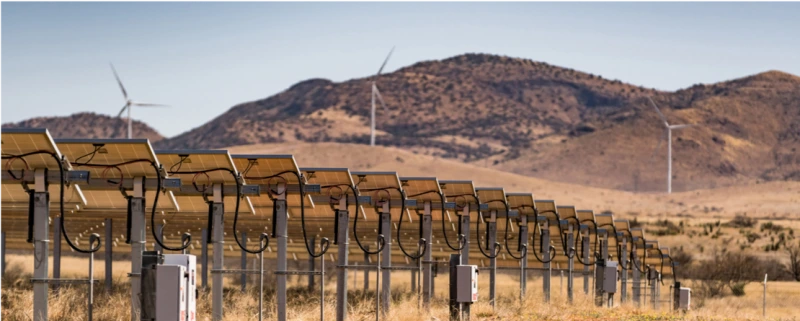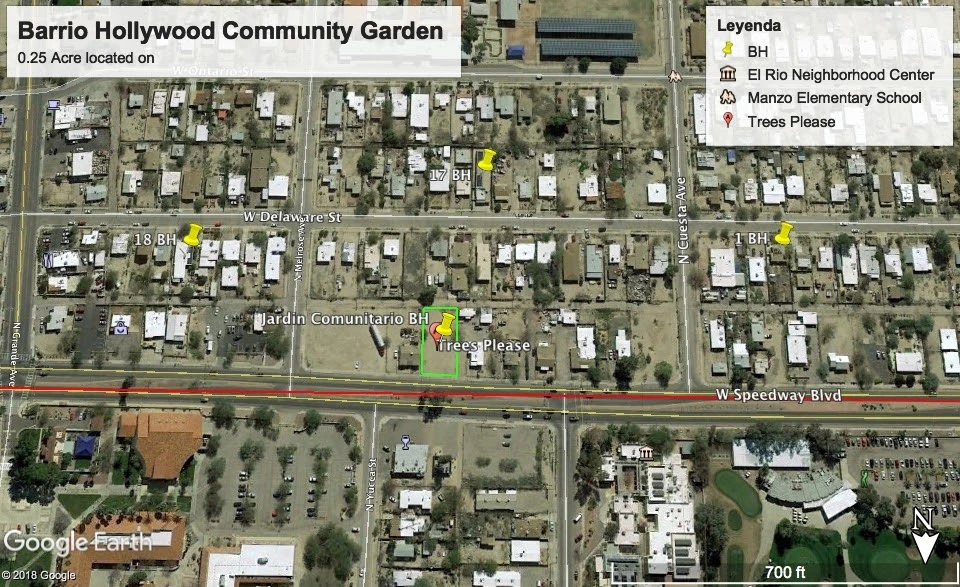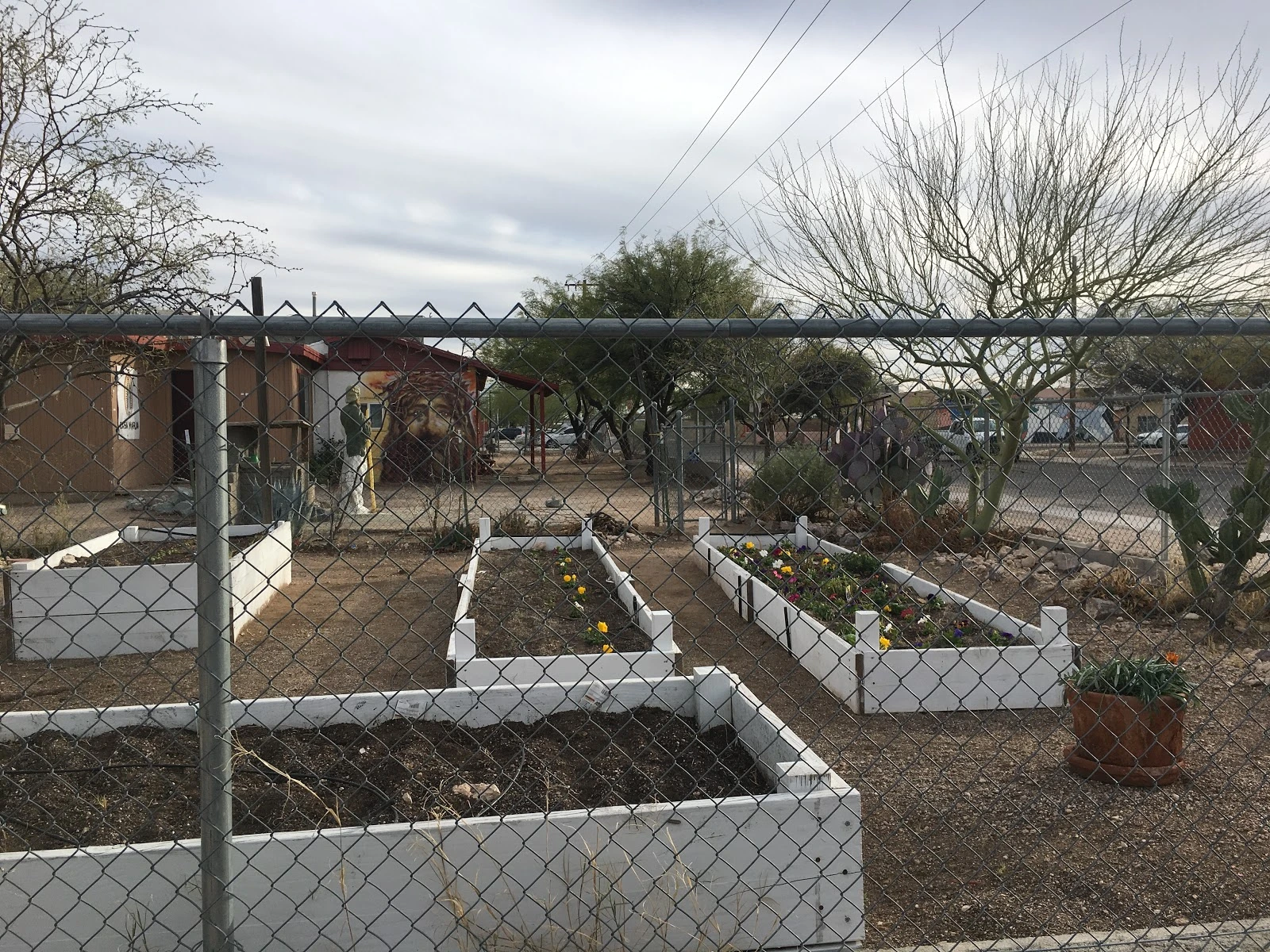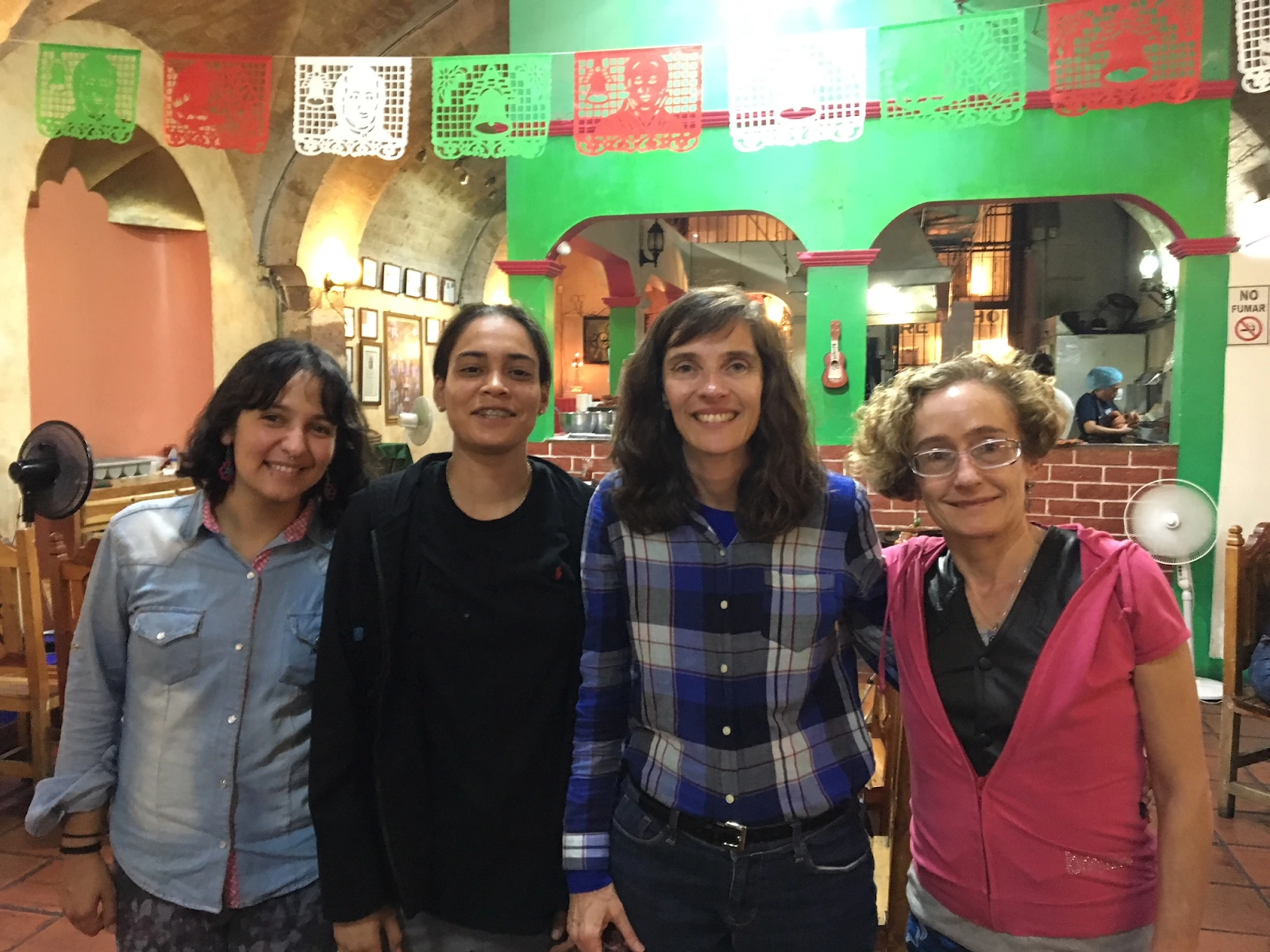Relevance of the Research

There is little information on interactions between large-scale renewable energy projects with local populations in the study areas due to the fact that these larger-scale projects have only just begun to be developed. The benefits and costs of the larger-scale projects for women are unknown. There is also a lack of information on current small-scale, decentralized use of renewable energy technologies and the effects of these on urban, peri-urban and rural women’s lives and livelihoods. The lack of information hinders the possibility of designing technologies that respond to the energy needs of women.
Arizona: General Characteristics
Arizona is located in the southwestern quadrant of the conterminous states. According to the U.S. Census Bureau, Arizona is among the fastest growing states. Its estimated 2018 population is 7,123,898 up from 6,828,065, the official estimate of the 2015 population. About half of Arizona is semiarid, one-third is arid, and the remainder is humid. Moisture-laden air from the Gulf of California and the eastern Pacific Ocean appears in July, bringing more than two months of irregular but sometimes heavy thundershowers that are part of the North American monsoon. Tucson receives about 11.8 inches (299.7 mm) of rain annually; in the monsoons an average of 3 inches of rainfall falls through the summer months. Winter rains come from the Pacific. There is a variety of altitudes and climate throughout the state thus it is not surprising to find similar diversity in the state’s vegetation. About one-tenth of Arizona is forested, one-fourth is woodland, one-fourth is grassland, and the rest is desert shrub.
Between 1880 and 1950 the production of copper remained by far the most important industry in Arizona. Arizona is still the leading copper-producing state in the country, but manufacturing has grown to become the state’s most important basic industry, notably in electronics, communications, aeronautics, and aluminum.
Agriculture in Arizona has included mainly the production of cotton, citrus, fodder and cattle although their contribution to the state’s economy has been declining due in part to urbanization and lower overall rainfall and more rainfall variability in addition to record high temperatures in recent years. The year 2017 was the hottest on record for the two largest cities in Arizona, Tucson and Phoenix. Arizona has the highest proportion of female to male farmers out of all the U.S. states. In 2012, women constituted 45 percent of all farmers within the state, not including the vast majority of urban farmers not accounted for.
In terms of large scale projects, the state’s renewable energy is concentrated in the transmission of electricity across state lines. Renewable energy development projects will generate power from Wyoming to population centers in the desert southwest, including Nevada, Arizona, and Southern California and additional proposed transmission projects would connect areas of southeastern California and New Mexico to southwestern Arizona. Some of the power for cities in Arizona is now being generated within the state.
Wind and Solar Energy in Arizona
Hydroelectric power has long dominated Arizona's renewable electricity generation but solar energy is providing increasing amounts of generation. According to the US Energy Information Administration, in 2016, renewable energy provided more than 12% of Arizona’s net generation, solar energy accounting for about 5% of electricity generated. The state’s total installed solar-powered electricity-generating capacity has increased substantially over the past two decades. In addition, Arizona ranks third in the nation in solar capacity, after California and North Carolina. Arizona has some wind potential. The first commercial-scale wind farm in Arizona became operational in 2009. But, in 2016, wind provided only 0.5% of the state’s net electricity generation.
A combined solar and wind farm called Red Horse II located in Cochise County, Arizona is a 71 MW renewable energy project that consists of 15 Vestas wind turbines standing more than 400 feet tall as well as a field of solar panels. Electricity generated at Red Horse II is sold under a 20 year power purchase agreement with Tucson Electric Power Company. A recent addition to the Red Horse II solar and wind farm is Red Horse III, a 30 MW solar farm located near Red Horse II which is sold under a 25 year power purchase agreement with UniSource Electric. Electricity generated from these renewable energy projects are transmitted to meet urban energy needs. Over next 30 years, Red Horse 2 farm is expected to cut carbon dioxide emissions by 5 million metric tons equivalent to removing 1 million cars from the roads. In a 2016 survey conducted by the Pew Research Center, 89% of Americans favor more solar panel farms and just 9% oppose and 83% support more wind turbine farms and only 14% oppose (Funk and Kennedy 2016. The Politics of Climate. A Report by the Pew Research Center. October 4, 2016).
In recent news, a monitoring report prepared for the Arizona Game and Fish Department revealed that in the wind farm’s first year, from July 2015 to July 2016, its 15 wind turbines, standing more than 400 feet tall, also killed an estimated 190 birds including a federally-protected golden eagle and an endangered bat. As of now, this wind-energy farm is under a federal criminal investigation.
Very little is known about how both large and small renewable energy projects affect women’s lives and livelihoods in the study area. Women play a large role in both rural and urban agriculture in Arizona, thus this study focused on women-agriculture-renewable energy relationships in terms of livelihoods and also renewable energy technologies that had a significant impact on women’s daily lives.
Study Sites in Arizona
The field work was carried out in three locations within southern Arizona. Each has different characteristics: one is a rural community (Cascabel), another is a peri-urban neighborhood (Flowing Wells) and the third is an urban neighborhood on the west side of Tucson (Barrio Hollywood).

Barrio Hollywood
Barrio Hollywood was selected as a research site in the city of Tucson as a low-income neighborhood of almost 2,800 inhabitants with an average annual income of $25,667 compared to the median household income in Tucson of $37,000. There are between 30 and 40 households in the neighborhood with solar panels on the rooftop or that practice urban agriculture at their homes. In this neighborhood, there is an elementary school with an award-winning ecology program and an agrovoltaic system that combines solar panels with a shade structure for one of the school's gardens.

The neighborhood was also selected because it is the only neighborhood with a community garden that is completely free for the gardener members. It uses renewable energy from solar panels for pottery and art classes for the community, workshops for children and adults on environmental issues and community activities such as environmentally themed movie. Renewable energy also powers lighting in the area where livestock are kept. This community garden is run by the non-profit organization Trees Please Arizona.

Currently, the garden has three solar panels; this energy is stored in a battery. The solar energy from the panels is used to power the workshops and movies.

The community garden is located on 1/4 of an acre of donated land with 20 plots and 30 gardeners. The activities and workshops are mainly used to obtain funds for their infrastructure, seeds and irrigation water for the free plots at the community garden.

Las Abuelitas
Las Abuelitas is an affordable rental housing development provided and managed by Primavera Foundation. Rents vary from $562 to $842 per month and applicants’ income must qualify. The housing development consists of solar covered parking, solar water heaters, water harvesting and a community garden where residents can have their own plot or have someone look after a plot for them.


Photo: Primavera Foundation
We met with a resident whose experience using a solar water heater has been an educational process. She and her family have become more aware of their energy consumption and notice when their energy use increases as their monthly electricity bill rises.

Casa María

Casa Maria is a Catholic Worker Community soup kitchen. Casa Maria volunteers serve lunch to 600 single persons, many of whom are homeless and they provide a family food bag to more than 200 families who are on the edge of poverty.
Casa Maria has a 3.87 kW solar electric (photovoltaic) system. The system saves the soup kitchen over $70 a month which allows them to reallocate those funds towards offering more services and providing food to more people.The panels were made possible through private donations and a grant through Technicians for Sustainability.
Casa Maria also grows some food of their own.
Las Casitas
Las Casitas on East Broadway in Tucson provides senior housing for low-income elders. Las Casitas is part of Housing and Urban Development’s (HUD) 202 housing programs where residents must be 62 years of age or older and rent is equal to 30% of the resident’s adjusted monthly income. It is the result a non-profit senior housing joint venture between Tucson Housing Foundation and Catholic Community Services. The building is fairly new compared to Barrio Viejo's, another low-income senior living housing development in the city.
Tucson was designated by the U.S. Department of Energy (DOE) on June 20, 2007, as a Solar America City. In order to develop comprehensive approaches to urban solar energy use that can serve as a model for cities around the nation, Las Casitas became the first HUD 202 Senior Housing project in Arizona to achieve Leadership in Energy and Environmental Design (LEED) Gold certification. It includes windows made from recycled materials, low-water use plumbing fixtures and highly efficient mechanical units. Las Casitas housing complex uses solar energy (pictured below) to meet the needs of its residents by providing maximum benefits to residents at a minimum cost.


In addition, there are 4 to 12 gardeners, mainly women who share communal crops in the community garden. Gardeners benefit as the garden helps with health problems. Many grow herbs, chile peppers, medicinal plants and work with the garden kitchen to enhance nutrition for the elderly.

Dunbar Spring, Arizona

Dunbar Spring is one of the oldest neighborhoods in Tucson and has a rich history. This neighborhood and many older neighborhoods suffered economic decline during the post-war period after 1945 when suburban development rapidly expanded Tucson. By the 1970’s and 1980’s, many houses were abandoned or in disrepair, crime rates had increased, and those with means chose to live elsewhere. Commercial development along the edges of the neighborhood began to erode the residential fabric of the community, replacing historic homes with commercial businesses. With the commitment and energy of an increasing number of newcomers combined with the historical wisdom and values of their long-term residents, Dunbar Spring has begun to turn itself around and is becoming once again a vibrant community.
This neighborhood is located near downtown in the city of Tucson, with a median income of 19.5K a year, and a population of 1,093 residents. Brad Lancaster is one of the members of the community that has been working on a more sustainable neighborhood, by installing water harvesting tanks in different parts of the community. Depending on the season, Lancaster gets 10 to 20 percent of his food from this sidewalk garden, and another in his yard, and also he’s trying to integrate a desert playground into the city with help of the Dunbar Spring Neighborhood Association.
The community garden from this area is making an effort to be more sustainable by collecting rain water and creating its own compost for future use and also educating the community members. Houses near this community garden have solar panels, water harvest tanks and some houses have passive energy like the house in the picture, which is one of the newest additions to the neighborhood. As we can observe the design and orientation makes it more energy efficient.

Flowing Wells, Arizona

This area was selected in the peri-urban area of the city of Tucson as a low/median income area of almost 98,566 residents with an average annual household income of $32,100 compared the to median household income in Tucson of $37,000. The Flowing Wells neighborhood stands out for having the majority of its residential real estate made up of mobile homes. In fact, 60.5% of the occupied real estate here are mobile homes, which is a greater proportion than is found in 99.7% of the neighborhoods in the U.S.
In this peri-urban area, schools began to install solar panels in December 2017. One of the schools we visited, Laguna Elementary, will soon install solar panels. It has a garden, where children plant different types of vegetables to sell on specific days of the month, with the objective of raising funds for the school. The cost of the produce is cheaper than produce found in stores, so this type of activity helps low-income families and kids gain access to healthier foods; it also teaches children about the chain of food production and what it takes to get the food onto our tables. This project and others alike have started to follow the example of Manzo Elementary School, a school that went from almost being closed to one considered to be a role model for promoting sustainability within the Tucson Unified School District.
In addition to solar energy used in schools the community center and residents in the area have also invested in passive and active solar energy in public places and in their homes.

Cascabel/Benson, Arizona

Solar panel in Cascabel, Cochise County, Arizona
The Community of Cascabel in Cochise County, Arizona, home to nearly 75 residents, was selected for this study as a rural area located in a 20 mile radius of Red Horse II and III solar and wind farms. In Cascabel, there are no paved roads or traffic lights, no grocery stores or cell service. The residents of Cascabel are mainly retirees and some families; most support, as one woman interviewee said: “the community side of sustainability and conservation”. Some residents do not notice any effect of the Red Horse II and III wind and solar farm, but many oppose the transmission towers and lines and their effects on the tourism economy in the area and some also are opposed to the negative effects on bats and birds, including endangered species that have been worse than at other similar types of energy projects in other locations.
Residents are investing in solar energy as they believe natural resources for electricity should be closer to sites where the energy is going to be used.
Cascabel Community Garden
Many community members benefit from the Cascabel community garden as it is a valuable source for food. The garden activities are led by an active female member of Cascabel. The garden is ⅗ of an acre and is communally farmed compared to traditional individually farmed plots. Solar panels are used for many different purposes in this garden that is located in an off-grid area.

Arizona Activities Accomplished

The bi-national research team convened in Zacatecas, Mexico in September 2017 to develop a bi-national survey to be applied to women in urban, peri-urban and rural areas in Zacatecas state and in Arizona.
The research team has been working alongside gardeners in community gardens as they ask questions about their roles in the garden and the social, economic and health benefits of the garden, as well as their perspectives on the role of renewable energy technologies in the garden.
The research team has also been attending community meetings and events at all of the research sites. Interviews and surveys have been conducted in neighborhoods in Tucson, in the peri-urban area of Flowing Wells, and in the rural community of Cascabel. Interviews of Red Horse II and III wind and solar farm and site visits with Tucson Electric Power staff have also been conducted.

Dr. Stephanie Buechler gave a presentation on the results to date of the Arizona part of this project as part of a panel on New Feminisms and Ecofeminism for the Gender and Women’s Studies Program at University of North Carolina at Greensboro in January 2018. Her presentation was titled ‘Agriculture and Renewable Energy Under Environmental Change: Emerging Areas in Ecofeminist Research.' It discussed two key questions, “How are rural and urban women who practice agriculture making use of renewable energy today?” and “How are questions of self-determination played out in small renewable energy projects?” and suggested that, “Feminist political ecology can help us understand issues of women’s control over natural resources such as wind and solar resources to facilitate access to food, livelihoods, social networks and cheaper energy.”
Arizona Preliminary Results
Women are using solar energy to facilitate access to food, livelihoods, social networks and energy in the city of Tucson, peri-urban areas near Tucson, and Cascabel—all located in southern Arizona. Some of these locations lacked a source of energy before, particularly urban empty lots or rural plots of land that were converted to community gardens. These community gardens then required an energy source. Renewable energy projects, it was found, are often part of other sustainability initiatives within women-led changemaking projects. Examples include rainwater harvesting, efficient irrigation projects and environmental education that increases water resource use sustainability as well as community activities for children, the elderly and the handicapped that foster social cohesion. These, as well as rooftop solar on homes, apartment buildings, businesses and educational institutions and solar panels shading parking lots or garden plots, are examples of smaller-scale projects that allow for greater autonomy on the part of individuals, social groups and non-profit organizations to engage in changemaking projects that benefit households and communities.
Many are led by women and aid women in myriad ways. Environmental justice issues around energy are often presented as renewable versus dirty energy sources. However, attention is also needed on issues of scale within the renewable energy sector. This project found that large-scale energy projects benefit urban populations but currently do not meet the energy needs of rural populations located near them. Thus, more communication with rural populations located near current and future projects needs to be fostered so that negative “externalities” of wind and solar projects can be minimized such as the visual effects on rural landscapes of towers, lines and other infrastructure and the negative effects on bats, birds and other wildlife.
In rural areas where people lack access to public and social services such as water, this project found that many invest in alternative renewable energy to save costs, reduce energy use, and conserve the environment as a better way to meet their needs. In contrast, in urban areas where most people have access to public services, renewable energy is being used in hopes of reducing monthly utility costs. Some urban areas do not have access to electricity such as lots where community gardens are developed; these areas are being served in some cases by energy from solar panels. Nevertheless, access to renewable energy for low-income residents in rural and urban areas remains a costly investment that is in need of some subsidies.

